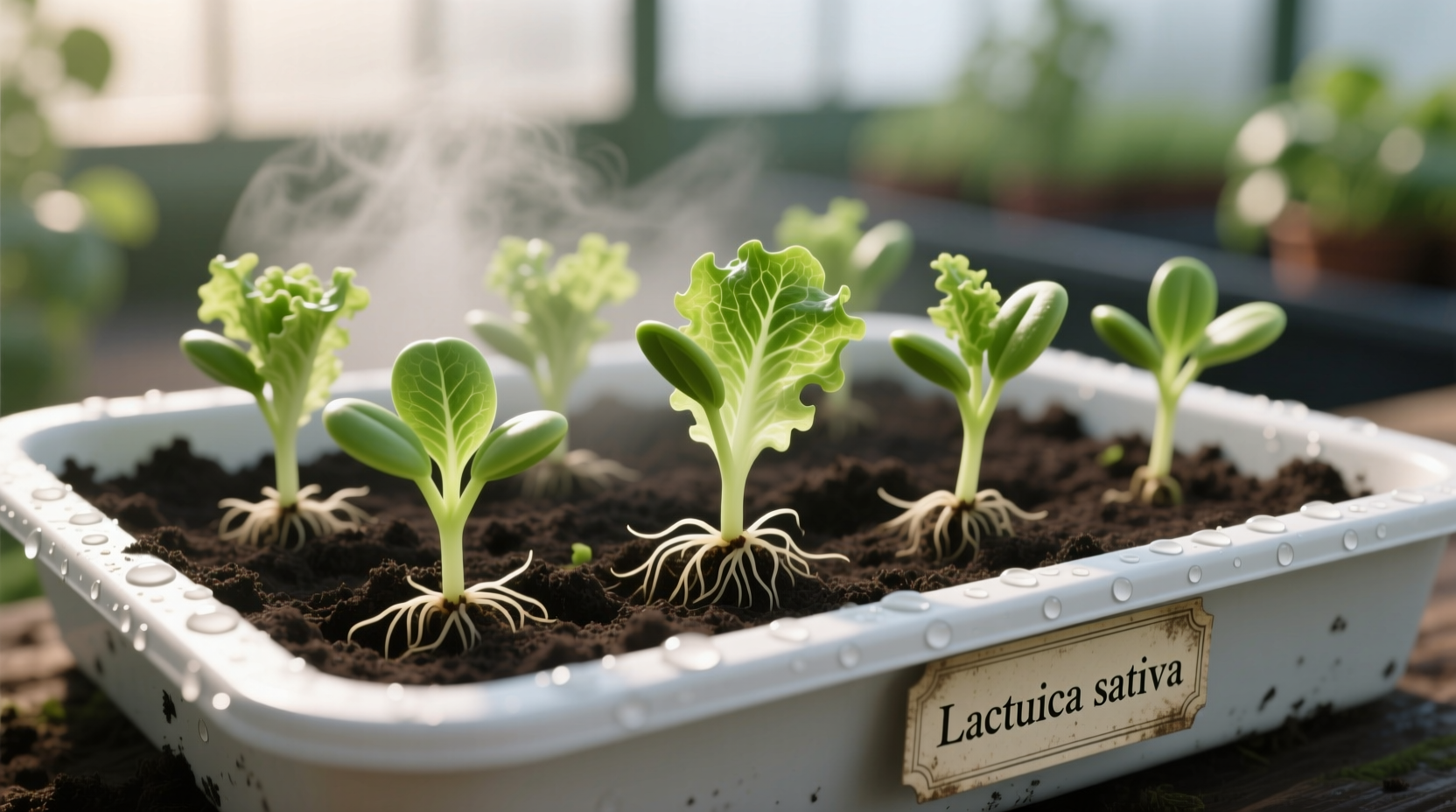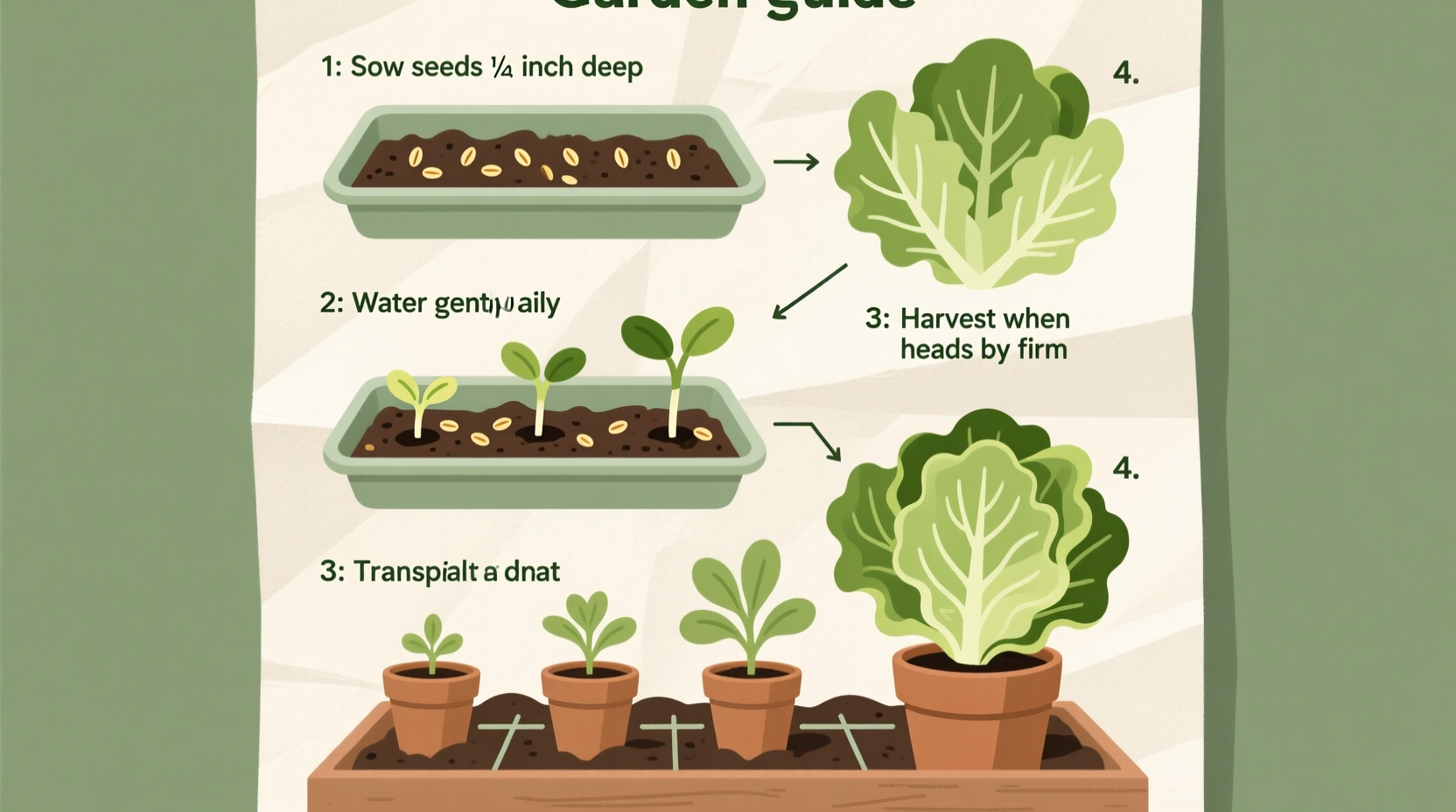Why Growing Lettuce From Seed Beats Buying Plants
Starting lettuce from seed gives you complete control over your harvest quality and variety selection. Unlike store-bought transplants that often come root-bound or stressed, home-germinated seeds develop stronger root systems from day one. You'll save 40-60% compared to purchasing seedlings while gaining access to 50+ unique varieties unavailable at garden centers. Homegrown lettuce harvested at peak freshness contains up to 30% more nutrients than store-bought alternatives, according to University of Minnesota Extension research.
Your Lettuce Growing Toolkit: Essential Supplies
Before planting, gather these fundamental supplies:
- Seeds: Choose from crisphead, butterhead, romaine, or loose-leaf varieties based on your climate
- Soil: Well-draining potting mix with pH 6.0-7.0 (test with $5 kit from garden center)
- Containers: 6-inch deep pots with drainage holes or prepared garden beds
- Watering can: With fine rose attachment for gentle seedling watering
- Labels: Waterproof markers for tracking varieties and planting dates

Step-by-Step Planting Process
Timing Your Planting Perfectly
Plant lettuce seeds 4-6 weeks before your last expected frost date for spring harvest. In warmer zones (7+), plant again in late summer for fall harvest. The Cornell University Gardening Guide recommends soil temperatures between 45-75°F for optimal germination. Extreme heat above 80°F causes bolting, while frost below 28°F damages young plants.
Sowing Seeds Correctly
Follow these precise sowing steps:
- Prepare soil by mixing in 2 inches of compost
- Sow seeds 1/4 inch deep, spacing 4 inches apart in rows
- Cover lightly with vermiculite to maintain moisture
- Water gently until soil is moist but not soggy
- Cover with plastic wrap to retain humidity for first 3 days
- Place in location with 6-8 hours of morning sun
| Lettuce Variety | Days to Maturity | Best Climate | Spacing Requirements |
|---|---|---|---|
| Butterhead (Boston) | 45-55 days | Cool to mild | 8-10 inches |
| Romaine | 65-75 days | Moderate | 10-12 inches |
| Loose-leaf | 30-40 days | All climates | 6-8 inches |
| Crisphead (Iceberg) | 70-80 days | Cool | 12-14 inches |
Nurturing Your Seedlings to Harvest
Watering Wisdom
Maintain consistent soil moisture – lettuce needs 1-1.5 inches of water weekly. Water early morning to reduce evaporation and prevent fungal diseases. During hot spells, increase to 2 inches weekly. The Oregon State University Extension confirms inconsistent watering causes bitter-tasting leaves and premature bolting.
Thinning for Success
When seedlings reach 2 inches tall, thin to proper spacing by snipping weaker plants at soil level. Never pull seedlings – this disturbs neighboring roots. Proper spacing prevents disease and ensures each plant receives adequate nutrients. Crowded lettuce produces smaller heads and bolts faster.
Season Extension Techniques
Extend your lettuce season with these proven methods:
- Cold frames: Protect plants during early spring frosts
- Shade cloth: Use 30% shade fabric when temperatures exceed 75°F
- Succession planting: Sow new seeds every 2 weeks for continuous harvest
- Mulching: Apply 2 inches of straw to maintain soil temperature
Troubleshooting Common Problems
Bolting prevention: When temperatures rise, plant heat-tolerant varieties like 'Summertime' or 'Oakleaf'. Provide afternoon shade and keep soil consistently moist.
Pest management: Aphids and slugs are common threats. Spray aphids with soapy water (1 tsp dish soap per quart water). Create slug barriers using copper tape around beds – the metal creates a mild electric charge slugs avoid.
Disease prevention: Rotate planting locations yearly to prevent fungal diseases. Water at soil level, not overhead, to minimize leaf moisture. Remove affected leaves immediately if downy mildew appears.
Harvesting for Maximum Flavor and Regrowth
Harvest lettuce in early morning when leaves are crispest. For loose-leaf varieties, pick outer leaves first, allowing the center to continue growing. Head-forming varieties should be cut at soil level when firm. The Penn State Extension confirms harvesting in the morning preserves up to 25% more nutrients compared to afternoon picking. Store harvested leaves in airtight containers with a paper towel to absorb excess moisture.
Pro Tips for Exceptional Lettuce
- Plant near tomatoes or cucumbers – they provide natural shade as they grow
- Use diluted fish emulsion (1 tbsp per gallon) every 2 weeks for nutrient boost
- Try interplanting radishes – they mature faster and mark your lettuce rows
- For container gardening, choose compact varieties like 'Tom Thumb' or 'Black Seeded Simpson'











 浙公网安备
33010002000092号
浙公网安备
33010002000092号 浙B2-20120091-4
浙B2-20120091-4